Repointing patio slabs
Patio slab pointing fails for a number of reasons – some simply to do with age, others relating to the method used for laying and pointing the slabs in the first place. Dry pointing (where a dry mortar mix has been used) has got a tendency to fair worse than a wet mortar mix, but if the slabs haven’t been laid properly in the first place, pointing doesn’t stand much of a chance anyway. Basically, if your slabs wobble, they need to be relaid before repointing. If the slabs themselves are secure, then the techniques shown and discussed below can be used.
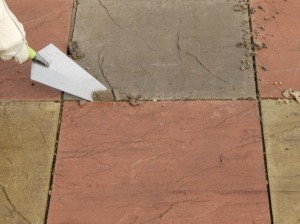 |
1. Use a trowel to rake out all the old loose mortar from between the joints. Take care not to chip the edges of the slabs. |
 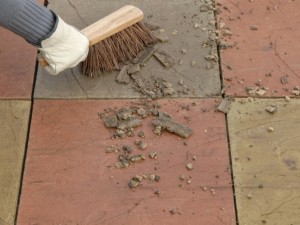 |
2. Brush off the slabs thoroughly with a hand brush to make sure you have as clean a surface as possible before you begin to infill the joints. |
 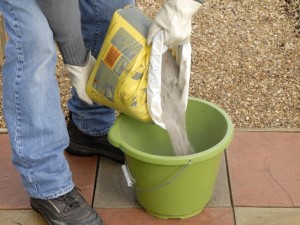 |
3. Pour some mortar mix into a bucket and mix it up with some water as directed by the manufacturer. |
 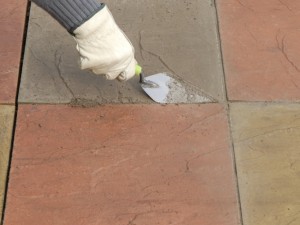 |
4. With a pointing trowel, press the mortar firmly down into the joints and be sure to ‘strike’ the joints, as shown, to ensure compact work. |
 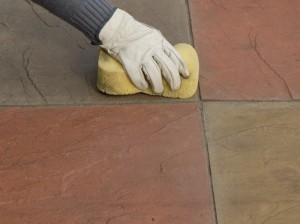 |
5. Keep as much mortar as possible off the slabs as it will stain them. Use a clean damp sponge to continually remove any excess. |
Repointing tips
- A bagged mortar mix has been shown here for convenience although you could mix up your own – a 4:1 sand to cement mix is fine.
- There are other DIY products such as Slablayer that may also be used as a pointing material. There is more about this in my ‘Laying a patio’ guide, but basically you fill the joints with the dry Slablayer and then sprinkle water across the joints dampening the Slablayer which will then set like standard mortar.
